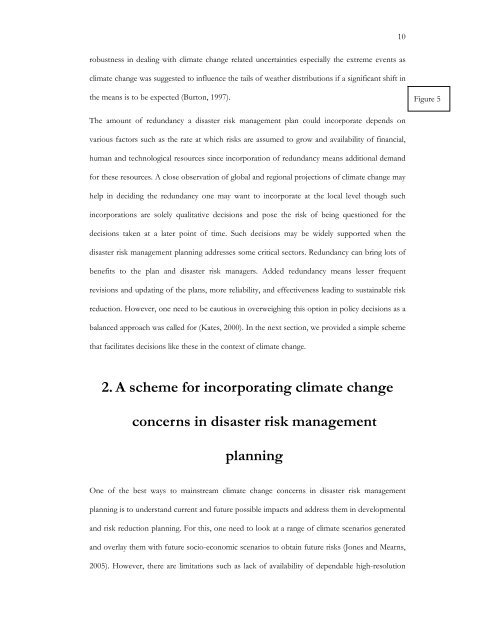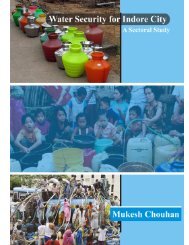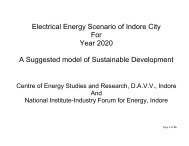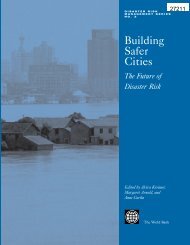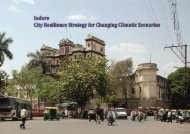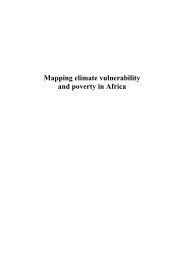Climate Change and Local Level Disaster Risk Reduction Planning ...
Climate Change and Local Level Disaster Risk Reduction Planning ...
Climate Change and Local Level Disaster Risk Reduction Planning ...
Create successful ePaper yourself
Turn your PDF publications into a flip-book with our unique Google optimized e-Paper software.
obustness in dealing with climate change related uncertainties especially the extreme events as<br />
climate change was suggested to influence the tails of weather distributions if a significant shift in<br />
the means is to be expected (Burton, 1997).<br />
The amount of redundancy a disaster risk management plan could incorporate depends on<br />
various factors such as the rate at which risks are assumed to grow <strong>and</strong> availability of financial,<br />
human <strong>and</strong> technological resources since incorporation of redundancy means additional dem<strong>and</strong><br />
for these resources. A close observation of global <strong>and</strong> regional projections of climate change may<br />
help in deciding the redundancy one may want to incorporate at the local level though such<br />
incorporations are solely qualitative decisions <strong>and</strong> pose the risk of being questioned for the<br />
decisions taken at a later point of time. Such decisions may be widely supported when the<br />
disaster risk management planning addresses some critical sectors. Redundancy can bring lots of<br />
benefits to the plan <strong>and</strong> disaster risk managers. Added redundancy means lesser frequent<br />
revisions <strong>and</strong> updating of the plans, more reliability, <strong>and</strong> effectiveness leading to sustainable risk<br />
reduction. However, one need to be cautious in overweighing this option in policy decisions as a<br />
balanced approach was called for (Kates, 2000). In the next section, we provided a simple scheme<br />
that facilitates decisions like these in the context of climate change.<br />
2. A scheme for incorporating climate change<br />
concerns in disaster risk management<br />
planning<br />
One of the best ways to mainstream climate change concerns in disaster risk management<br />
planning is to underst<strong>and</strong> current <strong>and</strong> future possible impacts <strong>and</strong> address them in developmental<br />
<strong>and</strong> risk reduction planning. For this, one need to look at a range of climate scenarios generated<br />
<strong>and</strong> overlay them with future socio-economic scenarios to obtain future risks (Jones <strong>and</strong> Mearns,<br />
2005). However, there are limitations such as lack of availability of dependable high-resolution<br />
10<br />
Figure 5


